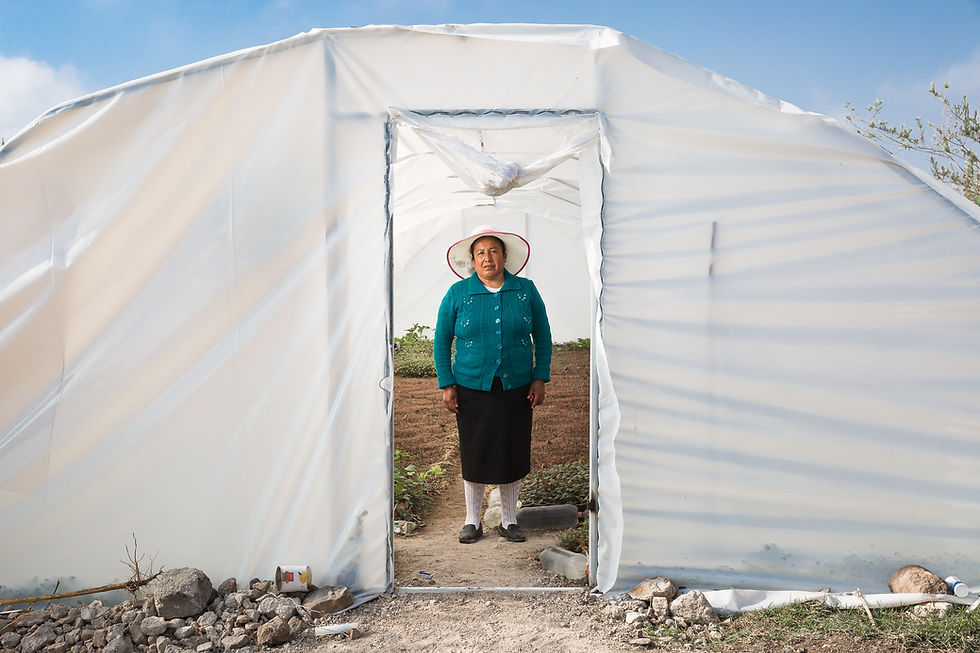In developing countries like Mexico, one of the inevitable questions is what can be done to improve the living conditions of people in rural communities where indexes of education, nutrition, health, and poverty are significantly worse than in city populations. While there are no easy answers, government and private institutions are in constant search for solutions to this difficult problem. One of these institutions is the NGO Mexico Tierra de Amaranto founded in 2005 by Mary Delano to leverage the outstanding nutritional properties and resilience of the amaranth to generate change. The aim of this exhibition is to increase support to accelerate the speed of change and its reach.
‘Dry Land Flower’ is the story of Margarita Dominguez Marcial, one of the 600 residents of El Varal, who completed two years of school due to her parents’ lack of resources. She represents the situation of millions of women in Mexico rural communities.
This collection of compelling photographs was created over a period of three years by the social documentary photographer Francisco Alcala Torreslanda.
Each piece in the exhibition reflects different aspects of how El Varal and the neighboring Chiteje de Garabato are being positively transformed with new skills, amaranth production, a more nutritious diet, and with increased levels of service and collaboration. Margarita empowered by Mexico Tierra de Amaranto with knowledge, work ethic, and other tools is playing the key role in this transformation.

“Before Mexico Tierra de Amaranto I did not know how to read or write, now I am reading and writing and learning how to use the computer”. “I want every person in my community to plant and consume amaranth. I want to help reduce obesity and diabetes. That can be done with a balanced diet that includes amaranth”.

As many other women in Mexico rural communities, Margarita Dominguez Marcial did not know how to read or write and had very little opportunities to improve her living conditions. In order to become a Mexico Tierra de Amaranto promoter, she had to ask permission from her husband.

Promoters are local women responsible to implement Mexico Tierra de Amaranto programs in their communities. Luisa Perez, Margarita Dominguez Marcial, and Antonia Chaparro in a workshop about MTA impact results, nutrition, and values. Mexico Tierra de Amaranto continuously invest in training to strengthen the promoters’ effectiveness.

Community greenhouse built with government support to produce amaranth and other vegetables used in the preparation of breakfast and lunch for children of parents in extreme poverty conditions.

Due to quicker turnover and more production yields, the amaranth leaves are more consumed than the grain. However, they are proven to be equally nutritious than the better-known amaranth grain.

Margarita is an example of service in her community and becoming a role model for many including her own family.

Margarita convinced the director and the parents of the ‘Diana Laura Riojas’ public pre-school to teach children how to plant and take care of the amaranth in the school grounds. The proceeds of the amaranth sold were used to help school needs.

Community women and men collaborate in the construction of a water tank for one of the beneficiary families. The first step is to create the metal structure

Margarita and other women in the community learn how to build tanks to accumulate rainwater to ensure water availability for their amaranth crops. The materials are acquired with money received by MTA from grants or donors.

Each 12,000-liter water tank serves one household amaranth planting needs. When built by the community women it costs about 50% of an industrially produced water tank.

Doña Emma Jurado and her daughter collect amaranth leaves. When the production is more than the amounts consumed by the family, the excess is sold to generate some needed supplemental income or exchanged for other goods.

Margarita regularly teaches local women recipes that include amaranth.

Children get a balanced diet at a shelter. Mexico Tierra de Amaranto is measuring various indicators to have facts solid data regarding the long term benefits of including amaranth in the children’s diet.

Mexico Tierra de Amaranto creates recipes that include amaranth but are based on what people in the rural communities regularly eat.

Laura Emma and Margarita’s granddaughter attend cooking lessons to learn how to include amaranth in their regular diets and combine it with ingredients they regularly use.

Doña Margarita Modesto is inspecting her backyard amaranth production. She is the largest producer of amaranth in both El Varal and Chiteje.

Amaranth leaves produced by women in Chiteje de Garabato are acquired by Mexico Tierra de Amaranto. They are cleaned, stabilized, frozen, packaged, and put on sale to restaurants and consumers in Queretaro.

The treasurer, president, and secretary of Chiteje de Garabato savings fund sponsored by Mexico Tierra de Amaranto. The forty one members meet weekly to review, track, invest, or borrow.

Women attending a workshop where Margarita is teaching them healthy eating habits. One of the women collaborates allowing the use of a space in her home.

“I am very proud because in El Varal and Chiteje de Garabato there are already more than100 women planting amaranth in their backyards. I cry of happiness because my dreams are coming true, but I expect to achieve more. I want to improve the lives of many other families. I am interested in improving the health of my community; the children and I hope everybody will consume amaranth. With the help of God I will achieve it”.
About the Project
